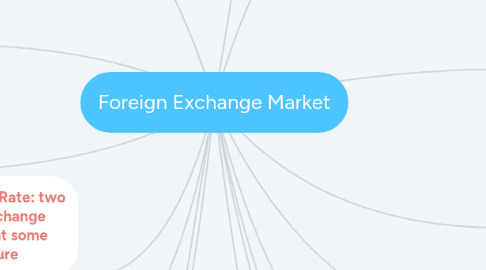Foreign Exchange Market
저자: Hanshinie Himasara


1. Use of FEM:
1.1. 1. To convert foreign currency received from exports, FDI and licensing to home country currency
1.2. 2. To pay a foreign company for its products/ services
1.3. 3. Invest spare cash in short term money markets
2. Currency Speculation: short term movement of funds form one currency to for profiting from the shift of exchange rates
3. Carry Trade: borrowing in one currency where interest rates are low and investing in other currency where interest rates are high
4. Forward Exchange Rate: two parties agree to exchange currency and deal at some specific date in future
4.1. Forward Ex Rate: the exchange rate generally quoted fro 30, 90 and 180 days
5. Nature of FEM: Global network of banks, FEx dealers , brokers connected with e communication systems
5.1. 1. never sleeps
5.2. 2. integration of various trading centers
5.3. London's dominance : history and geography
6. Law of one price: In competitive markets free of transportation cost and barriers to trade identical products should trade at the same price
7. Inflation: Monetary Phenomenon
7.1. when the quantity of money in circulation rises faster than the stock of goods and services
7.2. Price inflation high --currency depreciation
7.3. Fisher effect: A country's nominal interest rate is the sum of required real rate of interest and the expected rate of inflation
7.4. International Fisher Effect: For any two countries, the sport exchange rate should change in equal amount, but in opposite direction
8. International Monetary system: the institutional arrangements that govern exchange rates
8.1. FLOATING EXCHANGE RATE : a country allows the foreign exchange market to determine the relative value of a currency
8.2. FIXED EXCHANGE RATE:A fixed exchange rate system exists when countries fix their currencies against each other at some mutually agreed on exchange rate
8.3. PEGGED EXCHANGE RATE: a country fixes the value of its currency relative to a reference currency
8.4. DIRTY FLOAT:a country tries to hold the value of its currency within some range of a reference currency such as the U.S. dollar
9. Def : market for converting the currency of one country into another country
9.1. Ex Rate: the rate at which currency is converted into another
9.1.1. determined by the supply and demand of a currency relative to another
